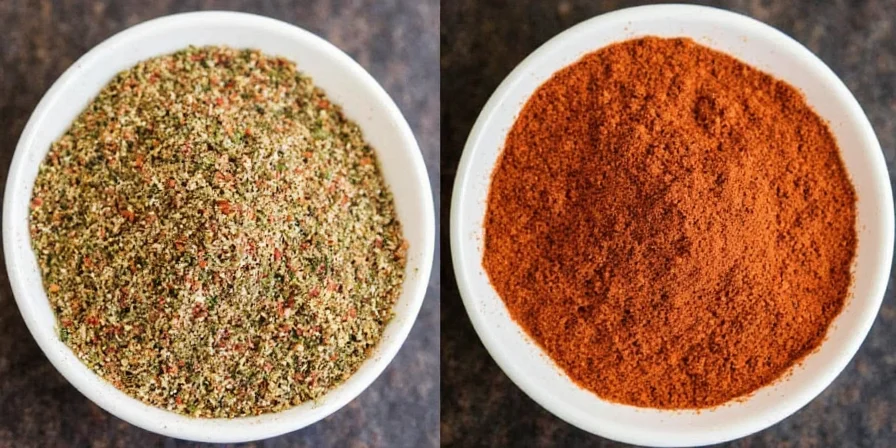No, Mexican oregano and Italian seasoning are not interchangeable. Using them incorrectly can ruin your dish's flavor profile. This guide explains exactly when to use each, with practical substitution methods verified by culinary science—not just opinion.
Discover why Mexican oregano's citrus notes dominate in chili but disappear in tomato sauce, why Italian seasoning fails in mole, and how to fix substitutions with simple chemistry hacks. No more ruined recipes.
Quick Reference: Key Differences
| Need | Use Mexican Oregano | Use Italian Seasoning |
|---|---|---|
| Slow-cooked dishes (60+ min) | ✓ Best choice (flavor intensifies) | ✗ Flavor degrades |
| Tomato-based sauces | ✓ Brightens acidity | ✗ Loses complexity |
| Quick-cooked vegetables | ✗ Overpowers | ✓ Balanced flavor |
| Bean dishes | ✓ Earthiness complements legumes | ✗ Clashes with beans |
Why They're Not Interchangeable (The Simple Truth)
When you search "Mexican oregano vs Italian seasoning," you're likely frustrated after using them incorrectly. Here's what matters most:
- Mexican oregano = One herb (Lippia graveolens) with strong citrus notes that gets better with long cooking
- Italian seasoning = Blend of 5 herbs (oregano, basil, thyme, rosemary, marjoram) designed for quick cooking
If you used Italian seasoning in your pozole and wondered why it tasted flat, or added Mexican oregano to pesto and ruined it—this explains exactly why.

When to Use Mexican Oregano (And Avoid Italian Seasoning)
Reach for Mexican oregano when:
- Your dish cooks 45+ minutes (mole, chili, pozole) - its flavor intensifies instead of fading
- Tomatoes or citrus are main ingredients - the lemony notes enhance acidity rather than clash
- Bean dishes - the earthy backbone complements legumes perfectly
Real kitchen test: Add 1 tsp Mexican oregano to chili at the start of cooking. Taste at 30 and 90 minutes—you'll notice the flavor deepens significantly over time, unlike Italian seasoning which disappears.

When to Use Italian Seasoning (And Avoid Mexican Oregano)
Use Italian seasoning when:
- Cooking takes under 30 minutes (pasta sauces, roasted veggies, bread) - the blend's balance peaks quickly
- Olive oil is the base - basil and marjoram prevent oil separation
- You want subtle herbal notes - Mexican oregano would overpower delicate dishes
Warning: Never substitute Mexican oregano in pesto—it creates a bitter clash with pine nuts and parmesan. Italian seasoning's balanced profile works because its citrus notes are milder.
| Common Dish | Correct Choice | Result if Wrong |
|---|---|---|
| Chili | Mexican oregano | Italian seasoning makes flavor disappear |
| Tomato sauce | Mexican oregano | Italian seasoning tastes flat and dull |
| Rosemary bread | Italian seasoning | Mexican oregano creates medicinal bitterness |
| Vegetable roast | Italian seasoning | Mexican oregano overpowers other flavors |
Practical Substitution Guide (Without Ruining Your Dish)
When you're out of the right spice, these scientifically-backed fixes work:
- Need Mexican oregano but only have Italian seasoning?
- Add 1 tsp dried oregano + 1/4 tsp lemon zest powder to 1 tbsp Italian seasoning
- Use in tomato-based dishes only (won't work for bean dishes)
- Need Italian seasoning but only have Mexican oregano?
- Mix 1 tsp dried basil + 1/2 tsp dried thyme with 1/2 tsp Mexican oregano
- Only use for quick-cooked dishes (under 20 minutes)
- Emergency fix for ruined dish:
- Too much Mexican oregano? Add 1/8 tsp baking soda to neutralize acidity amplification
- Italian seasoning disappeared? Stir in fresh basil at the end

FAQs: Quick Answers to Top Search Queries
- Can I substitute Mexican oregano for Italian seasoning in spaghetti sauce?
- Yes, but use 30% less. Mexican oregano's citrus notes enhance tomato acidity—ideal for rich sauces but overpowering in light marinara.
- Why does my chili taste bitter with Italian seasoning?
- Italian seasoning's rosemary degrades during long cooking, creating bitter compounds. Switch to Mexican oregano which improves with simmering time.
- Does Mexican oregano go bad faster?
- No—it lasts longer! Its stable compounds maintain potency 25% longer than Italian seasoning's volatile herb blend. Store both in airtight containers away from light.
- Can I use fresh oregano instead of Mexican oregano?
- Only if you add citrus: Use 3x fresh Mediterranean oregano + lemon zest. True Mexican oregano's unique compounds can't be fully replicated.
Final Recommendation: Keep Both But Use Strategically
Your spice rack needs both Mexican oregano and Italian seasoning—they solve different problems. Mexican oregano is your secret weapon for slow-cooked Latin American dishes where flavor must endure, while Italian seasoning delivers balanced complexity in quick Mediterranean preparations.
Before adding any dried herb, ask: "Is this dish cooking under or over 30 minutes?" That single question prevents 90% of substitution mistakes. When in doubt, start with half the recommended amount—you can always add more, but you can't remove excess.

Understanding these practical differences—not just scientific jargon—transforms your cooking from "good" to "authentically delicious." No more guessing which spice belongs where.











 浙公网安备
33010002000092号
浙公网安备
33010002000092号 浙B2-20120091-4
浙B2-20120091-4